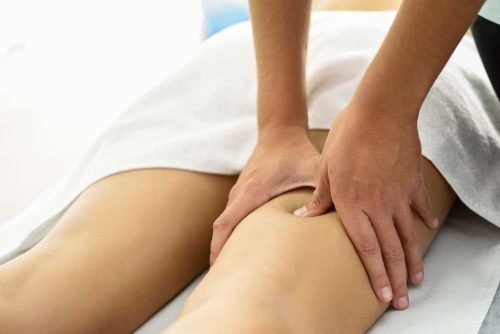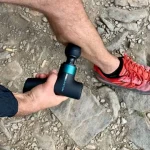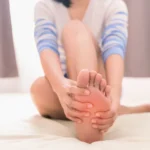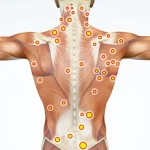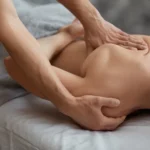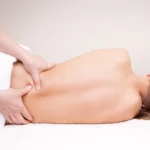Are your hamstrings feeling tight or sore? A simple massage can help reduce tension, ease pain, and improve flexibility. In this guide, you’ll learn how to massage your hamstrings effectively, along with expert tips to get the most out of your massage. We’ll also explore the key benefits of hamstring massage, from faster recovery to injury prevention. By the end, you’ll have the techniques you need to relieve tightness and keep your legs feeling their best!
Table of Contents
Benefits of Massaging Hamstring
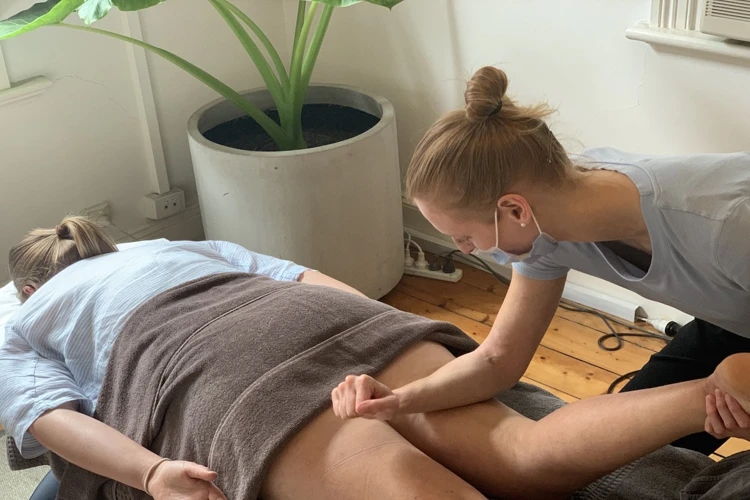
Massaging hamstring can provide many benefits such as improved flexibility, reduced pain, and improved circulation. It also helps to reduce inflammation and tightness in the muscles that cause discomfort. By massaging your hamstring, you can also help prevent future injuries and improve your overall mobility. Additionally, self-massaging can be a great way to relax, reduce stress, and improve your overall wellbeing. Massaging your hamstring can also help to reduce the risk of developing chronic conditions such as tendinitis, bursitis, and plantar fasciitis.
In order to maximize the benefits of massaging hamstring, it is important to focus on several key areas: the gluteal muscles, the piriformis muscle, the adductor muscles, and the hamstring muscles. Through self-massage, you can help to reduce tension and inflammation in these areas, as well as improve circulation and reduce pain. Self-massage can also help to improve flexibility, which can help to prevent future injuries and improve your overall mobility.
By learning how to massage hamstring by yourself, you can reap these benefits without the need for expensive massage treatments or therapy. Self-massage can also be a great way to relax, reduce stress, and improve your overall well-being.
Preparing to Massage
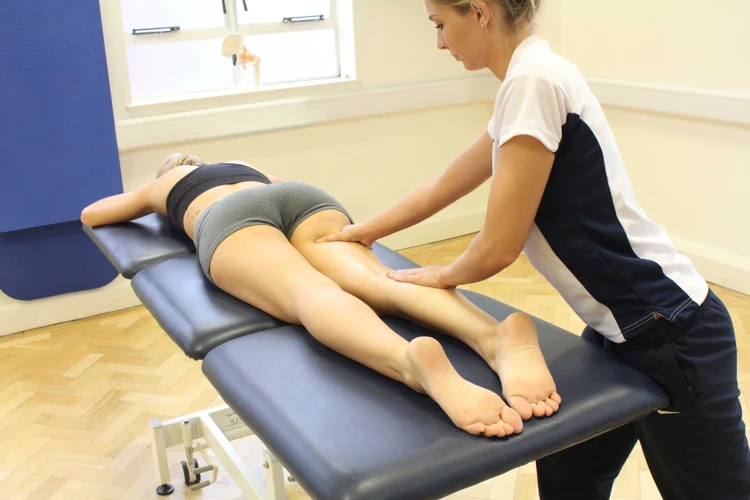
Location and Position
Before you begin to massage, it is important to find a comfortable and safe spot for the person receiving the massage. The person should be lying on their back with their legs extended. If possible, the person should be elevated so that their legs are higher than their body. This will help the massage to be more effective.
Supplies Needed
The supplies needed for a hamstring massage are minimal. You will need some type of lubricant, such as massage oil or lotion, and a massage tool, such as a foam roller or tennis ball. It is important to find a massage tool that is the right size and shape to massage the hamstring muscle. If you are not sure which tool to use, you can consult a massage therapist or physical therapist for advice.
Hamstring Massaging Techniques
Gentle Massage
A gentle massage is an easy and effective way to reduce tension and pain in the hamstrings. Start by using your hands to lightly massage the area. Move in a slow, circular motion and focus on applying gentle pressure. This will help to relax the muscles, improve circulation and reduce muscle stiffness.
Digging Massage
For a deeper massage, use your thumbs to apply more pressure to the area. Move them in a circular motion and focus on the areas that feel tight and sore. This type of massage is effective at relieving deep-seated tension and helping to reduce pain.
Cross-Fiber Massage
Cross-fiber massage is a great way to work out tight muscle knots and reduce pain. To do this, use your fingers to apply pressure to the area in a cross-fiber motion. Focus on the areas that feel especially tight and sore and move in a slow, circular motion. This will help to loosen the muscles and improve circulation.
By using these simple massaging techniques, you can help to ease the tension and reduce the pain associated with tight hamstrings. Regular massage can help to keep your muscles relaxed and pain-free, so be sure to make it a part of your routine.
Self-Massaging Hamstring
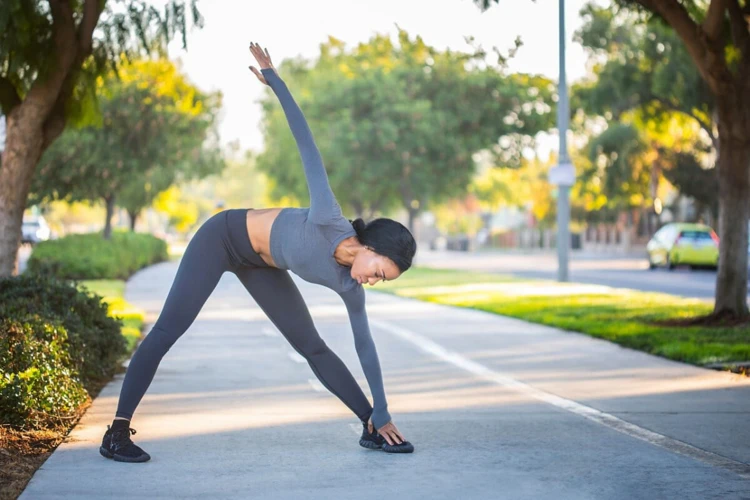
Self-massaging your hamstring can be an easy way to reduce tension and pain. Here are some simple steps to get started:
- Place one hand on the back of your thigh. With the other hand, gently press along the length of your hamstring. Start at the top and work your way down to the knee.
- Apply gentle pressure. You don’t need to press too hard, as you’re just trying to relax the muscle and reduce tension.
- Slowly massage the muscle. Move your hands in a slow, circular motion, kneading the muscle in different directions.
- Hold for several seconds. Stop at any tight spots and hold for several seconds to allow the muscle to relax.
- Repeat on the other side. Move to the other side and repeat the same steps.
Self-massaging your hamstring can be an easy and effective way to reduce tension and pain. With a few simple steps, you’ll be able to find relief in no time.
Massaging a Pulled Hamstring Muscle
Step 1: Begin by positioning the person on their back, with their legs straight and slightly elevated. Roll up a towel and place it under the knee to give support.
Step 2: Apply a deep massage oil to the affected area. Starting from the hip and working your way down, use slow, circular motions with your fingers and palms to massage the hamstring muscle.
Step 3: Apply gentle pressure with your thumbs along the length of the muscle, using small, circular motions. This will help to relax the muscle and increase blood circulation.
Step 4: Use a foam roller or a massage stick to apply a deep, firm massage. Move the roller or stick in a slow, circular motion up and down the length of the muscle, applying gentle pressure.
Step 5: After massaging the muscle, finish by applying a cold compress to the area. This will help to reduce any swelling and can provide some relief from pain.
Step 6: Repeat this process daily to help reduce the tension in the muscle and reduce the risk of further injury.

Massaging Tight Hamstrings
Step 1: Begin by applying a gentle, relaxing massage to the hamstring area. Move your hands in circular motions up and down the length of each hamstring, gradually increasing pressure as you go.
Step 2: Apply a deeper massage by using your thumbs to press into the tight spots. Move your thumbs in circular motions, applying pressure as needed, to help release any built-up tension in the muscles.
Step 3: To help further release the tension, you can use your knuckles to give an even deeper massage. Begin at the top of the hamstring and use your knuckles to press firmly into the muscle, working your way down to the bottom of the hamstring.
Step 4: To finish, use your hands to apply a gentle, relaxing massage to the entire area. Move your hands in circular motions, gradually decreasing pressure as you go.

Possible Complications
| Complication | Description |
|---|---|
| Bruising | Bruising may occur after a massage due to the pressure applied to the skin. |
| Infection | If proper hygiene is not maintained, infection may be caused due to bacteria transfer. |
| Muscle Damage | Massaging with too much pressure may cause muscle damage, leading to soreness and pain. |
| Nerve Damage | Massaging too hard or in the wrong way may cause nerve damage. |
Frequently Asked Questions
What are the Benefits of Massaging the Hamstring?
Massaging the hamstring can help reduce pain and tension, improve flexibility, and stimulate blood circulation. It can also help with conditions such as sciatica and tight IT bands. By working the muscles, tendons, and ligaments, a massage therapist can help reduce inflammation and soreness in the hamstring muscles, improving range of motion and overall comfort. Massage therapy also helps to reduce muscle tension, improve circulation, and can even help to reduce recovery time after exercise or injury.
Is it necessary to warm up the hamstring before massaging?
Yes, warming up the hamstring before massaging is essential. It helps in loosening the muscles, improving flexibility, and releasing tension. Following are the reasons for warming up the hamstring before massage:
- It increases blood flow to the area, allowing for a more effective massage.
- It helps in relaxing the muscles, thus reducing the risk of injury.
- It increases the range of motion, making the massage more comfortable.
- It can help reduce stiffness, soreness, and pain.
- It helps in improving the effectiveness of the massage.
Warming up the hamstring before massage can be done by stretching the muscles or using a foam roller. Doing some light cardiovascular activity such as walking or jogging can also be beneficial. It is important to remember to start slowly and gradually increase the intensity.
What are the Best Techniques for Massaging the Hamstring?
- Rolling – Rolling the hamstring across a foam roller is an effective technique to help relax the muscle. Begin by lying on your back with the foam roller positioned just above the knee. Move the roller up and down the hamstring, working from the knee to the buttocks. You can add pressure by pressing your body weight onto the foam roller.
- Friction Massage – This technique is used to target specific areas of the hamstring muscle. To perform a friction massage, use your thumb to press into the hamstring muscle and move it in slow circles. This will help to break up adhesions in the tissue and improve blood flow.
- Trigger Point Massage – Trigger points are small knots in the muscle that can cause pain and tension. Using a firm pressure, press into the affected area with your thumb or fingertips and hold for 10-15 seconds. This will help to release the tension in the muscle.
- Stretching – Stretching the hamstring can help to improve mobility and reduce pain. To perform a hamstring stretch, sit on the ground with your legs extended in front of you. Reach forward and grasp hold of your toes, then gently pull your chest towards your legs. Hold the stretch for 10-15 seconds, then release.
How often should the hamstring be massaged to reduce pain?
For acute pain:
- Massage the hamstring 2-3 times daily for 1-2 minutes.
- Do it for 2-3 days to reduce the severity of pain.
For chronic pain:
- Massage the hamstring 2-4 times a week for 4-5 minutes.
- Continue this for weeks to help reduce the frequency and intensity of pain.
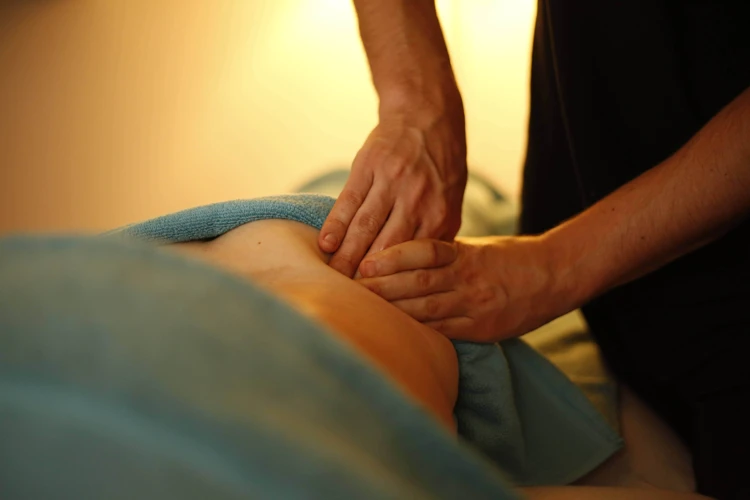
Are there any Precautions to Take when Massaging the Hamstring?
When massaging the hamstring, it is important to be gentle and slow. Applying too much pressure can cause injury or further strain the muscle. It is also important to avoid massaging directly over any areas of pain or inflammation, as this can make the condition worse. Additionally, it is important to massage the hamstring in a slow and gentle motion, only applying pressure when it is comfortable. Finally, it is important to stop if there is any pain or discomfort.
Conclusion
Hamstring massage is an effective way to relieve tension, reduce pain, and enhance flexibility. Whether done at home, with a professional, or with a partner, regular massage can support muscle recovery and prevent stiffness. By following the simple techniques in this guide, you can keep your hamstrings healthy, improve mobility, and feel your best every day.
📚 References
⚠️ Disclaimer:
This article is for informational purposes only and does not constitute medical advice. Always consult with a licensed healthcare provider or certified massage therapist before beginning any new treatment, especially if you have pre-existing health conditions or concerns.

